Accepted Scientific Name: Eriosyce rodentiophila F.Ritter
Kakteen Südamerika 3: 916 (1980).
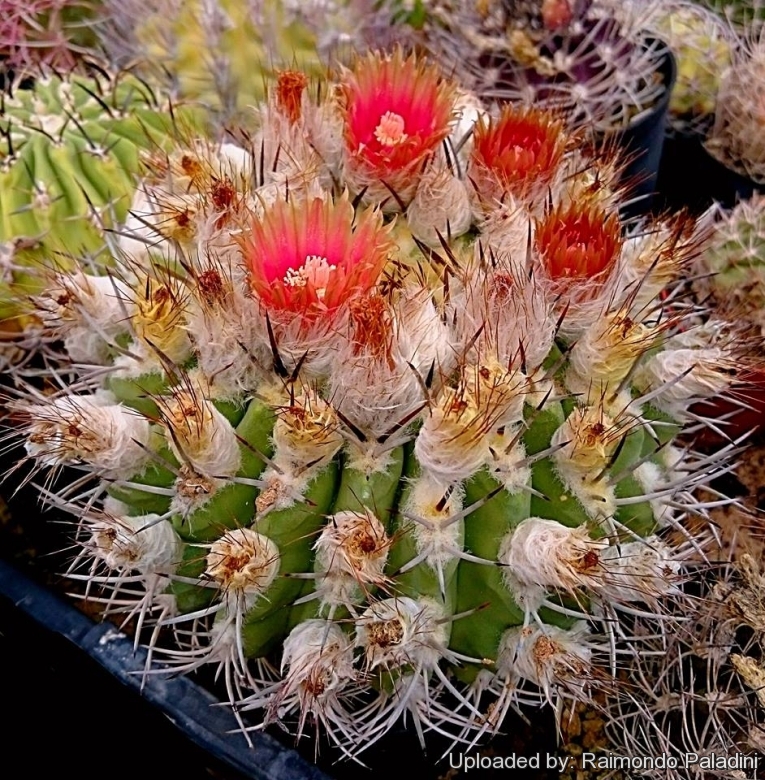
Eriosyce rodentiophila subs. fleischeriana Photo by: Raimondo Paladini
Eriosyce rodentiophila fleischeriana, (ex Cactus Flowers Rumst).
Origin and Habitat: Chile, Cifuncho, 200 m.
Synonyms:
See all synonyms of Eriosyce rodentiophila
back
Accepted name in llifle Database:Eriosyce rodentiophila F.RitterKakteen Südamerika 3: 916 (1980).Synonymy: 9
back
Description: Eriosyce rodentiophilaSN|2326]]SN|2894]] subs. fleischeriana|SN|14947]] published in Kníže Catalogue n.n. (name not validly published) is a local or morphological form of Eriosyce rodentiophilaSN|2894]]SN|2894]]. It is very similar to the standard species and not easily separable by any important character from the other rodentiophila. The spines take a grey-brown colouring with time.
Habit: It is a solitary (never clustered) barrel shaped cactus.
Stem: Globose to shortly columnar with time, 12-32 cm in diameter, with stem apex covered by white wool.
Roots: Fibrous, produced from short tuberous root.
Ribs: 18-35, obtuse, strongly notched to form tubercles.
Spines: Numerous, thick, curved upwards, dull ivory to horn coloured, becoming grey.
Central spines: 4-8,30-50 mm long.
Radial spines: 12-15,20-30 mm long.
Flowers: Borne on older areoles at the woolly top of the plant, campanulate, cream coloured or reddish, 2,5-4 cm long, 2.2-3 cm in diameter; pericarpels and floral tubes covered by white wool and with stiff bristles.
Fruits: Very different from those of Eriosyce aurataSN|2326]]SN|2326]], with a fleshy, juicy and acid wall, reddish yellow, 25-30 mm long, covered with few white wool and not dehiscent. (Eriosyce rodentiophilaSN|2894]]SN|2894]] is the only Eriosyce with fruits that do not split open! On the contrary Eriosyce aurataSN|2894]]SN|2326]] fruits are thin-walled, heavily woolly green and dehiscing from a basal pore).
Subspecies, varieties, forms and cultivars of plants belonging to the Eriosyce rhodentiophila group
- Eriosyce atacamensis (F.Ritter & Y.Itô)
- Eriosyce megacarpa F.Ritter: Differs for larger larger fruit. Distribution: south of Chañaral.
 Eriosyce rodentiophila F.Ritter: is a solitary (never clustered) barrel shaped cactus, with stem apex covered by white wool. Spines thick, curved upwards, dull ivory to horn coloured, becoming grey. Distribution: north of Taltal south to below Chanaral.
Eriosyce rodentiophila F.Ritter: is a solitary (never clustered) barrel shaped cactus, with stem apex covered by white wool. Spines thick, curved upwards, dull ivory to horn coloured, becoming grey. Distribution: north of Taltal south to below Chanaral. Eriosyce rodentiophila subs. fleischeriana (Kníže): is very similar to the standard species and not easily separable by any important character from the other rodentiophila. Distribution: Cifuncho.
Eriosyce rodentiophila subs. fleischeriana (Kníže): is very similar to the standard species and not easily separable by any important character from the other rodentiophila. Distribution: Cifuncho.- Eriosyce rodentiophila var. lanata F.Ritter: Areoles more woolly. Fruit slightly smaller, yellow or orange, not red. Seed slightly smaller. Distribution: between Cifuncho Esmeralda and along the coast.
Bibliography: Major references and further lectures
1) James Cullen, Sabina G. Knees, H. Suzanne Cubey “The European Garden Flora Flowering Plants: A Manual for the Identification of Plants Cultivated in Europe, Both Out-of-Doors and Under Glass” Cambridge University Press, 11/Aug./2011
2) David Hunt, Nigel Taylor “The New Cactus Lexicon” DH Books, 2006
3) Edward F. Anderson “The Cactus Family” Timber Press, 2001
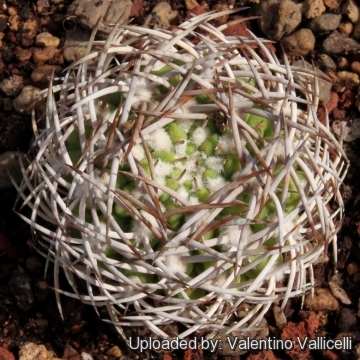 Eriosyce rodentiophila subs. fleischeriana Photo by: Valentino Vallicelli
Eriosyce rodentiophila subs. fleischeriana Photo by: Valentino Vallicelli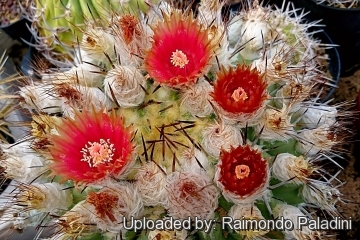 Eriosyce rodentiophila fleischeriana, (ex Cactus Flowers Rumst). Photo by: Raimondo Paladini
Eriosyce rodentiophila fleischeriana, (ex Cactus Flowers Rumst). Photo by: Raimondo Paladini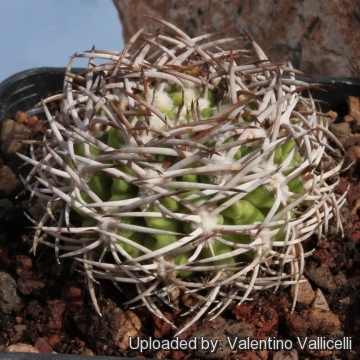 Eriosyce rodentiophila subs. fleischeriana Photo by: Valentino Vallicelli
Eriosyce rodentiophila subs. fleischeriana Photo by: Valentino Vallicelli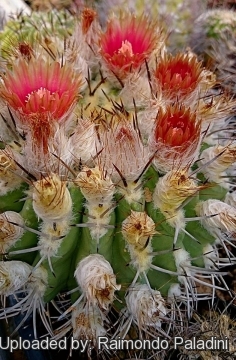 Eriosyce rodentiophila subs. fleischeriana Photo by: Raimondo Paladini
Eriosyce rodentiophila subs. fleischeriana Photo by: Raimondo PaladiniCultivation and Propagation: It is a very slow growing and extremely rot prone species if kept in a non ventilated place.
Soils: Require a very fast mineral draining drying soil (70-80% grit and 20-30% of land soil).
Watering Needs: Extremely root prone, needs good drainage, waterings should be rather infrequent in summer (do not overwater), to keep the plant compact and not become excessively elongated and unnatural in appearance. Keep dry in winter, or when night temperatures remain below 10° C.
Exposure: Requires strong sun exposure to develop good spinal growth (maximum brightness, sunlight accepted), but tolerate light shade.
Hardiness: Good heat tolerance. Hardy to at least -5°C for a short period but cannot tolerate long standing freezing temperature, and for an healthy cultivation ensure a minimum temperature of 5° C. Assure a good ventilation. USDA Hardiness Zone 9b and 11.
Propagation: Usually propagated from Seeds. (seldom produces offsets). Contrary to what is often observed with the seeds of Eriosyce aurataSN|2894]]SN|2326]], seeds of Eriosyce rodentiophilaSN|2326]]SN|2894]] germinate readily with good yields. The seedling growth is rapid. But the seedling are often grafted because the plants on their own roots (especially the bigger ones) are extremely prone to root rot. In fact the best and older specimens are the grafted ones.















